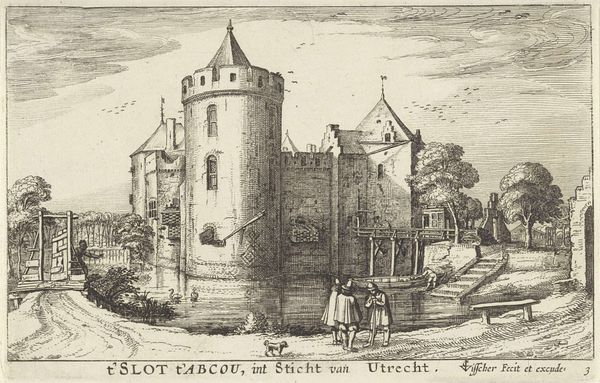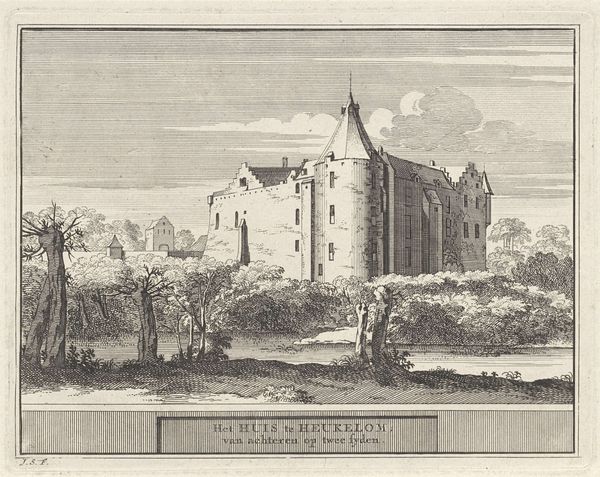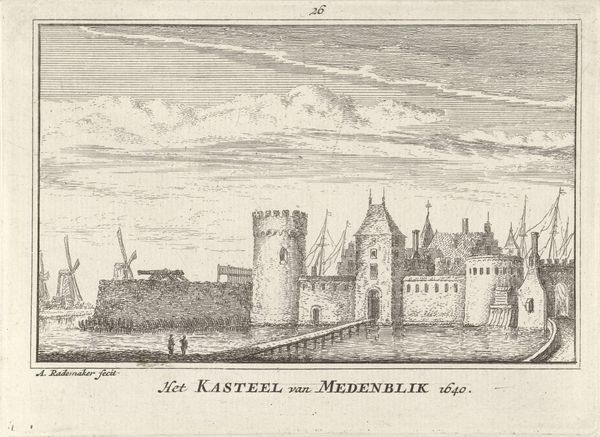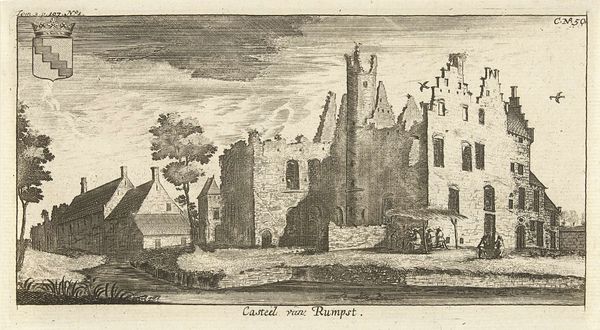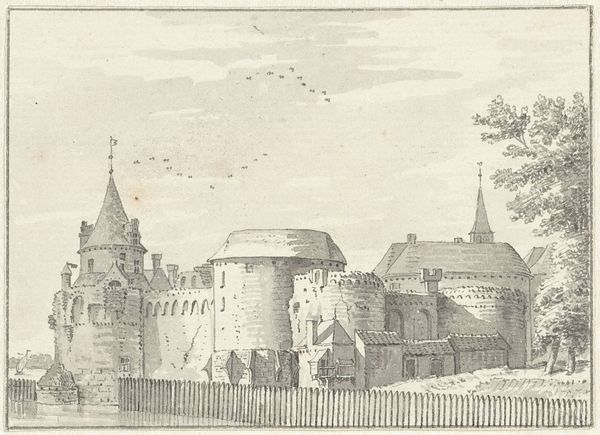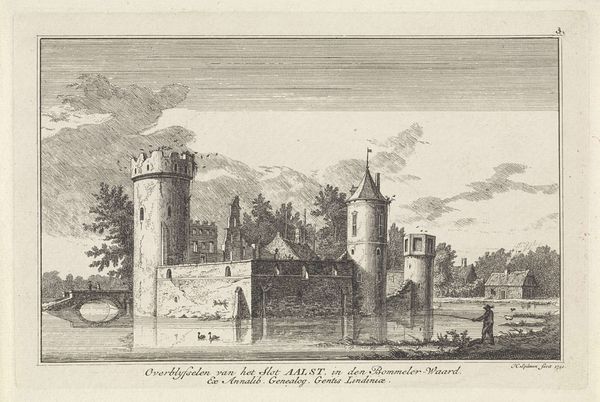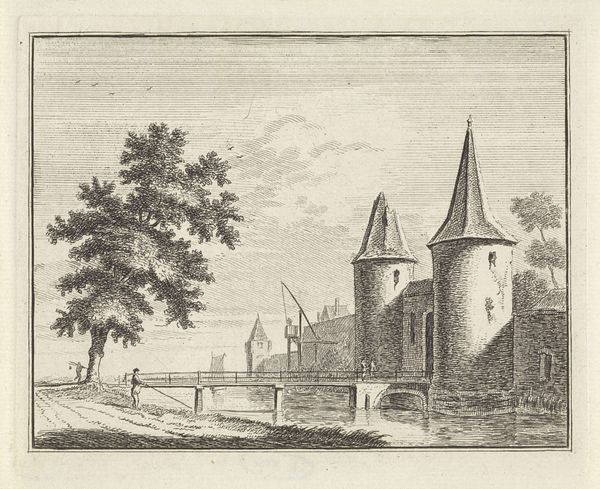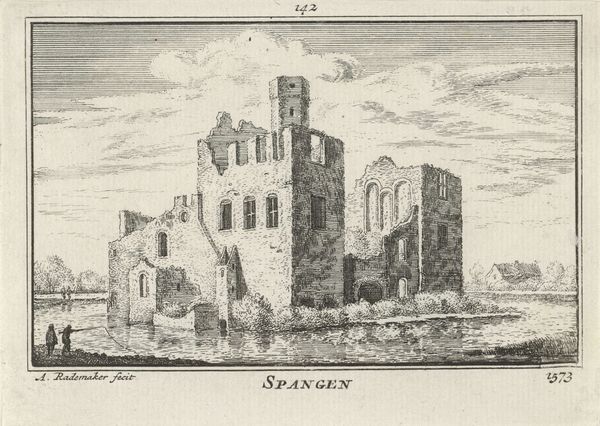
print, etching, paper, engraving, architecture
#
baroque
# print
#
etching
#
landscape
#
paper
#
pen-ink sketch
#
engraving
#
architecture
Dimensions: height 80 mm, width 115 mm
Copyright: Rijks Museum: Open Domain
Curator: So, this etching before us is titled "Gezicht op het Valkhof," dating roughly from 1727 to 1733, by Abraham Rademaker. What's your first take? Editor: It’s melancholic, isn’t it? Those precise lines detailing the stoic architecture against that lightly etched sky… gives the impression of something distant and lost to time. Curator: Indeed. Rademaker was prolific in capturing Dutch landscapes and cityscapes, particularly through prints. Note the baroque influence - can you see how it affects the composition? Editor: Absolutely, there is that embrace of detail. But I think, primarily, it lies in how the light plays across the planes of the fortress. Even the clouds appear sculpted. Though monochrome, one feels that intense modeling, where the engraving seeks to imitate the quality of layered paint and vibrant textures. Curator: His work, you see, aimed to meticulously document places of historical interest. He travelled extensively, making sketches on site which he then translated into prints. The intention was very much archival, recording vanishing topographies. Editor: Yes, almost as a form of elegiac preservation. I am drawn to the textural contrasts—the density of line-work building up shadow and substance in the castle, offset against those wispy, ethereal strokes attempting to capture movement and cloud form above. It’s a play, visually, of permanence versus transience. Curator: The use of etching and engraving offers that stark contrast so well. It allows for a precise linear quality to the architecture while also achieving delicate tonal effects. Paper, a fragile base material in itself, here records something seemingly eternal— or at least built to endure. Editor: And Rademaker's hand grants that endurance another life, even as the original structure is subjected to weather and time, the lines hold steady in a single, imagined, untouchable instance. A paradox, beautifully wrought. This landscape almost becomes a mental one, you know? A memoryscape. Curator: An apt summary. The way Rademaker marries historical documentation with artistry grants his scenes a strange sort of lingering resonance, something akin to memory itself. Editor: Beautifully put!
Comments
No comments
Be the first to comment and join the conversation on the ultimate creative platform.


